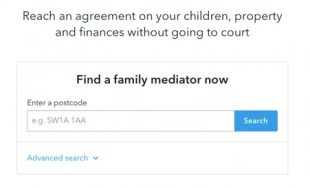Digital teams often make prototypes when designing services. They offer a quick, cost-effective way to explore different designs and processes.
Prototyping can also help policy teams understand the impact of their policies and how they can be translated into delivery and operations early in the policy cycle. It highlights the risk in their assumptions about the systems, people and even physical spaces that are needed to guarantee the success of their proposals.
It can also be a powerful communication tool to bring together senior stakeholders and teams responsible for delivery.
Prototyping during discovery
Earlier in the year, the Private Family Law Delivery team ran a discovery on mediation, which is a way of helping parents agree child arrangements without going to court.
We wanted to understand:
- the needs and context of parents who are considering mediation
- how much parents understood mediation and why they were considering it
- how we might encourage parents who find mediation appropriate to pursue that option.
As part of the discovery, we ran two different lab experiments with prototypes. This is unusual for a discovery because they usually focus on interviews. However, we already knew a lot about our users, so we wanted to explore the things that might trigger behaviour change.
We weren’t testing prototypes to decide what to build; we used them as a tool to learn about our users. We then used this knowledge to inform policy and service design options.
Experiment 1

One of the things we wanted to understand was how parents choose a mediator.
To help us understand the factors that parents base their decisions on, we created a prototype of a ‘Find a mediator’ service. This allowed users to search for their nearest mediator using a postcode, with the option of narrowing down their search with a set of filters for things like gender, language, and qualifications.
We weren’t actually planning to build the service for real, we just wanted to learn about the process of choosing a mediator.
By showing real users the prototype and seeing which of the filters they selected, if any, we were able to gain insights into whether people just wanted to find their nearest mediator, or whether they based their decision on a broader range of information.
We were also able to ask questions like ‘would you involve your partner in the process?’. As a result, we were able not only to confirm our initial assumptions around the information users needed to make decisions, but we also managed to reach consensus amongst stakeholders about the most important issue to tackle first.
Experiment 2

We also wanted to learn more about how best to engage parents with mediation. In most cases, one parent initiates the process but for mediation to succeed, it’s vital that the other parent is also engaged.
To help us understand what worked best in engaging the other parent with mediation, we created a set of cards. These contained different types of messaging, including:
- informal invitations to mediation
- more formal and direct invitations
- options showing photos of different mediators for parents to choose
- invitations that focused on explaining the process of mediation.
We showed these to people who had been asked to try mediation by their ex-partner.
The results allowed us to not only identify the need to build awareness and understanding of mediation but also to learn what kinds of messaging were most effective.
Designing a new pathway for mediation

The value of this experimentation was not to test specific features. Instead, we learned that most participants had a very low understanding of mediation, especially in regards to how it worked and what different methods and options were available.
Given that mediation is the preferred policy approach for separating parents, the lack of awareness of what mediation entails has had a negative impact on the success of this policy.
These new insights have helped us re-evaluate policy objectives, re-purpose our team members’ expertise and prioritise deliverables in the pipeline.
We are now redesigning the future experience of parents agreeing child arrangements through continuing to build and test to develop our insights.
We recently wrote about how we built and iterated our ‘get help with child arrangements’ information service, which is now in public beta, and contains information on how mediation works and the pros and cons of using it for dispute resolution.
What do you think about using prototyping to inform policy? How have you used prototyping? Let us know in the comments.

3 comments
Comment by Zach posted on
Hi Alejandra,
Cool blog! At DfT we've just set up a team to quickly build prototypes. My thinking was we simply focus on getting a working prototype done, and worry about testing later (if it was worth taking forward), but I really like the idea that the prototype isn't just a demo - it's a way of gathering data!
I'd be super interested to learn more about how MoJ run their prototype projects - i'll drop the MoJ digital mailbox a line
Comment by Alejandra Diaz posted on
Thanks Zach for your comments - we will be happy to help.
All the prototypes we originate seek to gather evidence to prove or disprove our hypotheses. It is the quickest way to come to early conclusions and support policy on their work. You can email me directly to my digital.justice account.
Comment by Babita Ramlal posted on
Do you have any resources or best practices that you can share with us on the site?